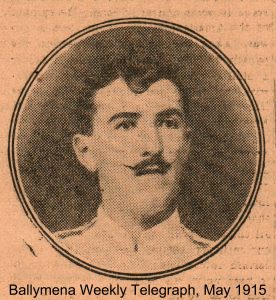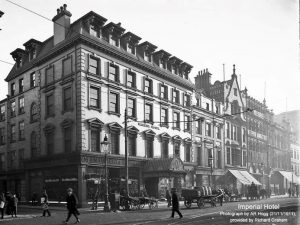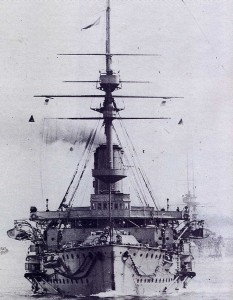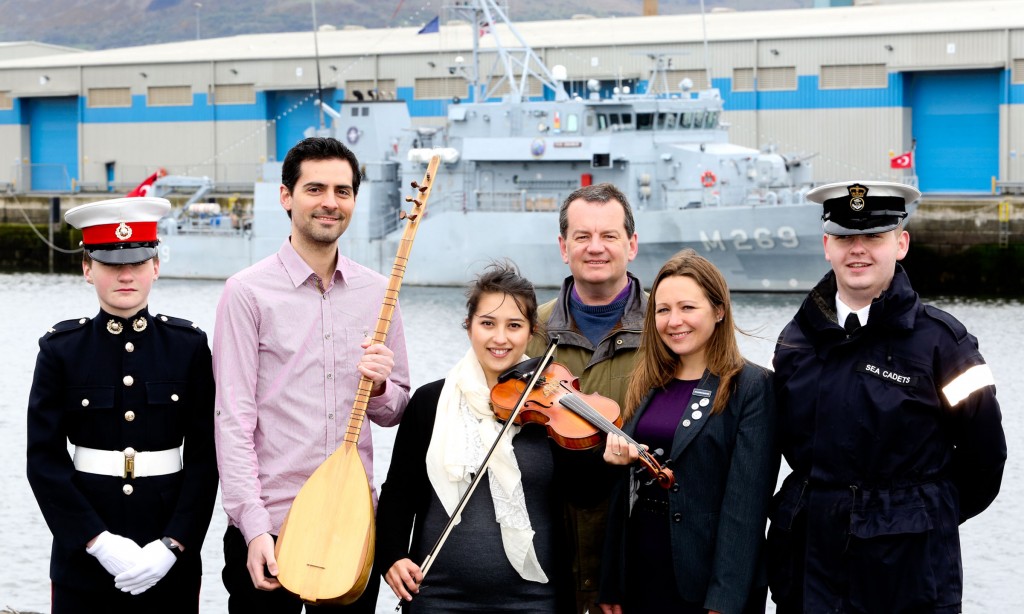 This article commemorates the memory of Lance-Corporal Hugh McNeill of the Royal Marine Light Infantry who died on 21st June 1918, 100 years ago today.
This article commemorates the memory of Lance-Corporal Hugh McNeill of the Royal Marine Light Infantry who died on 21st June 1918, 100 years ago today.
 According to naval records, Hugh McNeill was born in Belfast on 5th January 1881. Hugh enlisted on 7th July 1899 and served in the crushing of the Boxer Rebellion (10th June to 31st December 1900) in China, for which he was awarded the China War Medal (1900). He subsequently served on HMS Goliath. In 1911, he was stationed at Fort Blockhouse in Gosport and he was discharged on 6th September 1912, having completed twelve years of service. On the following day, he enrolled with the Royal Fleet Reserve.
According to naval records, Hugh McNeill was born in Belfast on 5th January 1881. Hugh enlisted on 7th July 1899 and served in the crushing of the Boxer Rebellion (10th June to 31st December 1900) in China, for which he was awarded the China War Medal (1900). He subsequently served on HMS Goliath. In 1911, he was stationed at Fort Blockhouse in Gosport and he was discharged on 6th September 1912, having completed twelve years of service. On the following day, he enrolled with the Royal Fleet Reserve.
He settled in Belfast and was Head Boots at the Imperial Hotel, which was located on the corner of Donegall Place and Castle Lane. When Hugh married Annie Harland on 12th October 1913 at St Joseph’s Roman Catholic Church in Belfast, he was recorded as being a “Navy man” and was living at 56 Canal Street in Saltcoats, Scotland. His father’s name was recorded as Daniel (Tradesman) and Annie, a millworker, was a daughter of Michael Harland (Tradesman) of 12 Bute Street in the Jennymount district of Belfast.

At some stage after their marriage Hugh and Annie moved to Ballymena and were living at 11 James Street when Hugh was recalled from the Royal Fleet Reserve. His name is included on the list of 78 men from All Saints’ Roman Catholic Church serving with His Majesty’s forces that was published in the Ballymena Weekly Telegraph on 5th June 1915.

As there were insufficient ships to accommodate all the naval personnel recalled from the reserves and men enlisting with the navy, Winston Churchill, First Sea Lord, instituted a new naval force called the Royal Naval Division, which would fight as infantry in land campaigns. Hugh McNeill served with the Portsmouth Battalion of the Royal Marine Brigade of this new force at Ostend and Antwerp between 26th August 1914 and 1st September 1914. He was wounded in the left leg and right knee by a splinter from a German shell and, during the withdrawal from Antwerp, the train on which he was travelling was knocked off the rails and surrounded by Germans. In the engagement that followed, there were many casualties on both sides and several marines were captured but a party of 90 men under Major French got safely away after a 35-mile forced march to the Belgian village of Ecloo.
 Hugh McNeill then served with a Royal Naval Air Service’s Armoured Cars unit under Commander Charles Rumney Samson RN between 10th September 1914 and 17th October 1914 before returning to the Royal Naval Division. Following a period of furlough, an interview with Hugh McNeill was published in the Ballymena Weekly Telegraph in May 1915 in which he spoke highly of the “pluck and daring” of Commander Samson, particularly in engagements with roving units of Uhlans (Light Cavalry, with a Polish military heritage), saying that, “the Germans had come to greatly dread and fear Commander Samson and his gallant men”.
Hugh McNeill then served with a Royal Naval Air Service’s Armoured Cars unit under Commander Charles Rumney Samson RN between 10th September 1914 and 17th October 1914 before returning to the Royal Naval Division. Following a period of furlough, an interview with Hugh McNeill was published in the Ballymena Weekly Telegraph in May 1915 in which he spoke highly of the “pluck and daring” of Commander Samson, particularly in engagements with roving units of Uhlans (Light Cavalry, with a Polish military heritage), saying that, “the Germans had come to greatly dread and fear Commander Samson and his gallant men”.
In January 1918, Hugh McNeill was promoted to Lance-Corporal and transferred to HMS President III – this was not a ship but a shore establishment for men serving on Defensively Armed Merchant Ships. Hugh was a member of the gun crew on SS Montebello when she was torpedoed by U-100 on 21st June 1918 and sank 320 miles from Ushant, an island off the coast of Brittany, with the loss of 41 lives. Lance-Corporal McNeill, who is commemorated on the Portsmouth Naval Memorial, was 37 years old when he died. He was awarded the British War Medal, the Victory Medal and the 1914 Star, the latter being issued to his widow on 1st July 1920.
Nigel Henderson, History Hub Ulster Member
Acknowledgements and Sources:
Michael Nugent (ww1researchireland.com), John Hoy (Ballymena & The Great War, snake43.webs.com/), Richard Graham, Ballymena Weekly Telegraph, Royal Navy & Royal Marines War Graves Roll and Royal Naval Division Casualties of the Great War.

 The Gallipoli campaign resulted in the deaths of over 100,000 Allied and Turkish servicemen in just eight months. Serving both at sea and on land, the Royal Navy and Royal Naval Division lost many men in what was to become an unmitigated military disaster of poor planning that resulted in the loss of more than 44,000 Allied lives. In contrast, the defence of Gallipoli was the Ottoman Empire’s most successful military operation of the war.
The Gallipoli campaign resulted in the deaths of over 100,000 Allied and Turkish servicemen in just eight months. Serving both at sea and on land, the Royal Navy and Royal Naval Division lost many men in what was to become an unmitigated military disaster of poor planning that resulted in the loss of more than 44,000 Allied lives. In contrast, the defence of Gallipoli was the Ottoman Empire’s most successful military operation of the war. To read how History Hub Ulster remembered those Irishmen lost on HMS Goliath
To read how History Hub Ulster remembered those Irishmen lost on HMS Goliath 


